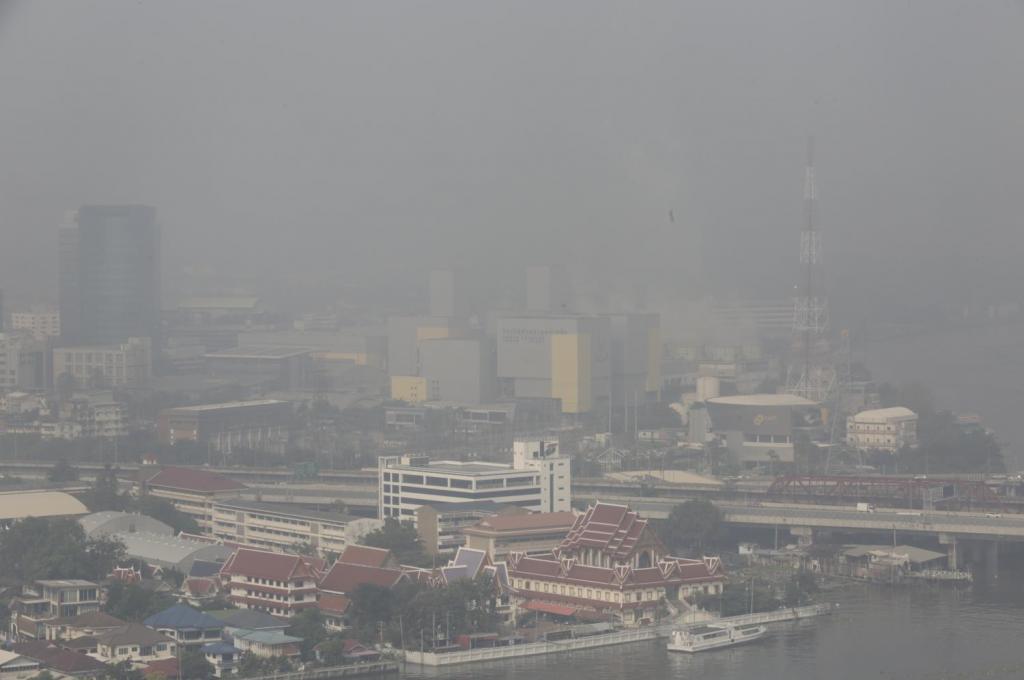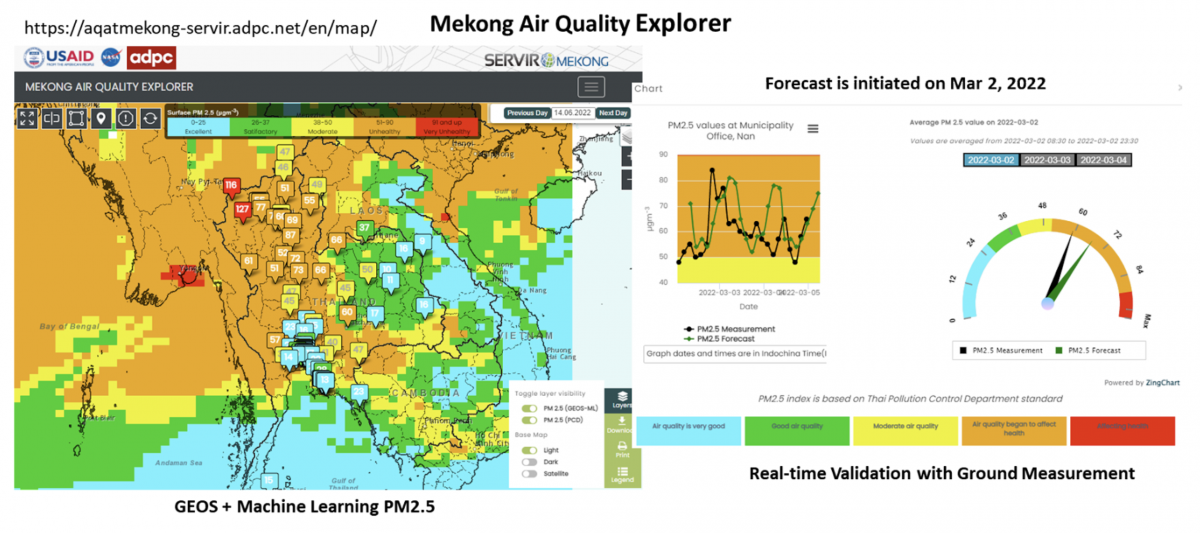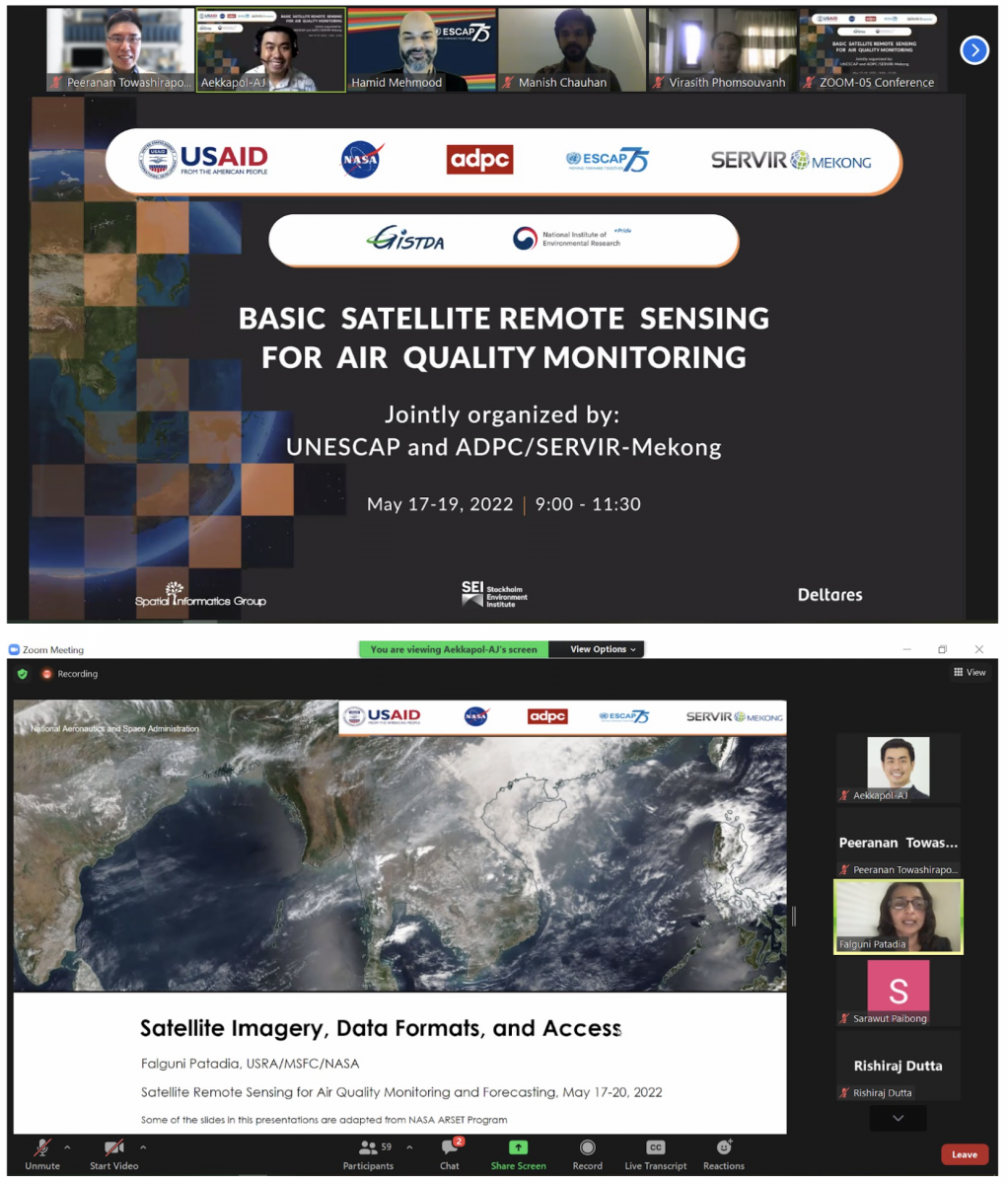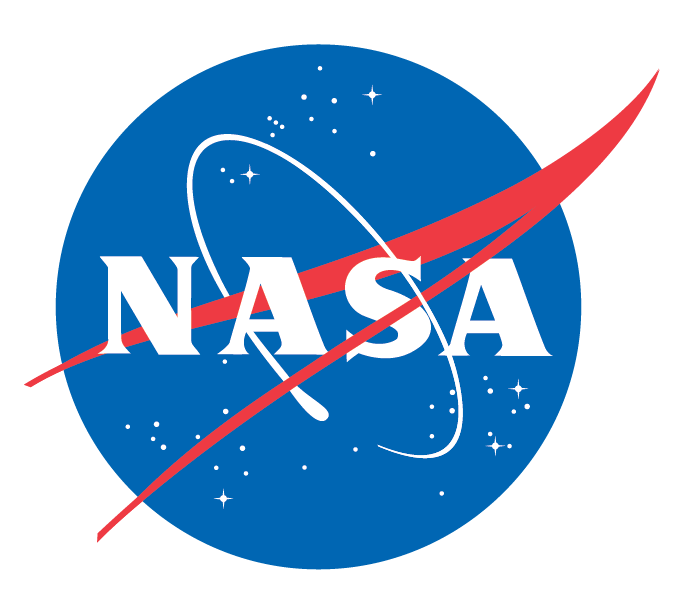SERVIR-Mekong and United Nations ESCAP Enhance the Capacity of ASEAN Countries to Improve Air Quality for Better Health Outcomes

Transboundary haze is a seasonal problem in the ASEAN region, resulting in poor public health outcomes. In Thailand, SERVIR-Mekong developed the Mekong Air Quality Explorer Tool to provide air quality forecasting data to Thailand’s Pollution Control Department and the Chiang Rai provincial government to regulate agricultural burning and identify forest fires, thereby improving air quality.

To scale the success of its air quality monitoring work in Thailand to the wider region, SERVIR-Mekong, in collaboration with the United Nations Economic and Social Commission for Asia and the Pacific (UNESCAP), organized an online training on basic remote sensing for air quality monitoring for sixty participants from South and Southeast Asian countries from May 17 - 19, 2022. This training raised awareness and enhanced the regional capacity of policy makers and the scientific community to scale up SERVIR-Mekong’s air quality work.
This collaboration demonstrates the demand and scalability of SERVIR-Mekong’s Air Quality Explorer Tool to address the challenge of transboundary air pollution. It also facilitates the advancement of the ASEAN Agreement on Transboundary Haze Pollution, which is the legally binding environmental agreement signed in 2002.
SERVIR-Mekong is a unique partnership between the U.S. Agency for International Development (USAID) and the U.S. National Aeronautics and Space Administration (NASA). Implemented by the Asian Disaster Preparedness Center (ADPC), SERVIR-Mekong developed the Air Quality Explorer tool that uses satellite data to monitor and forecast air quality, thereby helping authorities devise data-driven policies and strategies to tackle air pollution and enhance health outcomes.
According to António Guterres, UN Secretary General, “Today, as many as nine out of ten people breathe polluted air, leading to some 7 million premature deaths each year, of whom 600,000 are children.” This number, he adds, could double by 2050, if we do not act decisively. In Thailand, agricultural burning and forest fires, including transboundary haze, have contributed to high levels of air pollution. Forest fires release particulate matter (PM) into the atmosphere. PM is a common proxy indicator of air pollution consisting of sulfates, nitrates, ammonia, sodium chloride, black carbon, mineral dust and water. PM2.5 refers to microscopic particles with a diameter of 2.5 microns or less (30 times smaller than the diameter of the human hair.)
Delivered by a team of experts from the Asian Disaster Preparedness Center, UNESCAP and NASA, this training will support National Governments, NGOs and educational institutions in improving their institutional capacity by strengthening their knowledge on the use of earth observation data for air quality monitoring while also understanding the benefits that remote sensing could bring to improve their operational planning.
Participants from Thailand, Vietnam, Cambodia, Philippines, Indonesia, Bangladesh, Sri Lanka, India and the United States were trained on the basics of remote sensing as well as air quality monitoring using various NASA tools including information on access to near-real time satellite data for fire monitoring and forecasting, data on aerosol optical depths and information on PM2.5. An overview of the multi-functional capability of the Mekong Air Quality Explorer was provided that will enable users to apply a wide array of satellite-based indices to monitor fire hotspots and PM2.5 in the region.

SERVIR-Mekong will continue to build the institutional capacity of relevant stakeholders in the region on the use of earth observation data for air quality monitoring and measuring PM2.5 using the Mekong Air Quality Explorer and other NASA Air Quality platforms to support improved public health outcomes by promoting clean air for blue skies.



